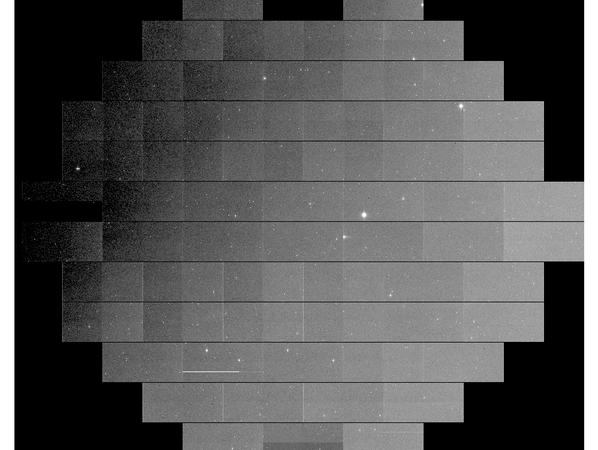This past week I went to two observatories for some observing runs: Cerro Tololo International Observatory (CTIO) and La Silla Observatory. I've talked about La Silla before (here and here). However, it's been several years since I've been to CTIO. I'll briefly go over my experience there observing the Dark Energy Camera (DECam).
I had visited CTIO several times during my graduate career as part of my thesis work. That was several years ago, yet I still felt I was familiar enough with the observatory that I could get around without feeling lost. The only new thing now was that I'd be using DECam, a very wide-field imager.
CTIO is almost exactly as I remember it, though the control room at the 4-meter telescope has been updated. I don't think I felt nostalgia, but I was proud to be back at my first observatory in Chile. I'm sure I'd feel the same way if I go back to Lick Observatory.
 |
| The control room at the 4-m telescope. |
I was here for 3 nights to observe with DECam. DECam is a huge 520-megapixel camera comprised of 62 CCDs that covers a field of view larger than the full moon. Most impressive, however, is the effort put into optimizing it so it runs almost perfectly without human help. Many times you encounter old instruments that run well, but require so much user interaction that the whole night is spent babysitting the instrument. This is not the case with DECam. I could load up a script and pretty much let it run all night without any problem. Guiding and focusing are automatic, so are slewing and filter changes. As long as you have a script pre-made (and there's a program to help you do that), you're good to go. A possible decision point would be what calibration fields to use for the photometry, but that again was a quick and obvious choice. I honestly wondered why I was at the observatory at all! ESO frequently runs like this, but at least at ESO you have finding charts you need to consult to make sure you're in the right field. Not so with DECam given it's huge field of view. That made it a pleasure to use and also gave me plenty of time to do other work throughout the night.
 |
| The DECam field of view for one of my observations. The area covered by this single exposure is about 20 times that of the full moon as seen from Earth. |
The rest of my time at CTIO was spent like at most other observatories: planning for the night (in this case, making sure the scripts were ready as I had to do some changes), sleeping, eating, and working on other projects. I wasn't as productive the first night, but that could have been fatigue from being the first night. Also, I got a lot of emails with several urgent matters so I got quickly overwhelmed, which only made me more tired.
The second night at the telescope wasn't as good as we had bad weather, but we managed somehow. The final night made up for it by being as clear as the first one. I was able to repeat some problematic frames on the first night that were a tad too close to the full moon. I now have a lot of data to work with. Each DECam file is about 1GB in size and with all the fields and filter changes I did, that amounts to over a terabyte of data. Yikes!
Throughout this week I was also running the @Astrotweeps twitter feed. This account features astronomers and planetary scientists explaining how they go about their work for a single week. I deliberately choose this week since I knew I would be observing. I hope those following along got something of value from it. I created a Storify summary of my tweets, which you can find here.
It was nice to see CTIO again after all these years. I look forward to working with all that DECam data!

No comments:
Post a Comment
Note: Only a member of this blog may post a comment.